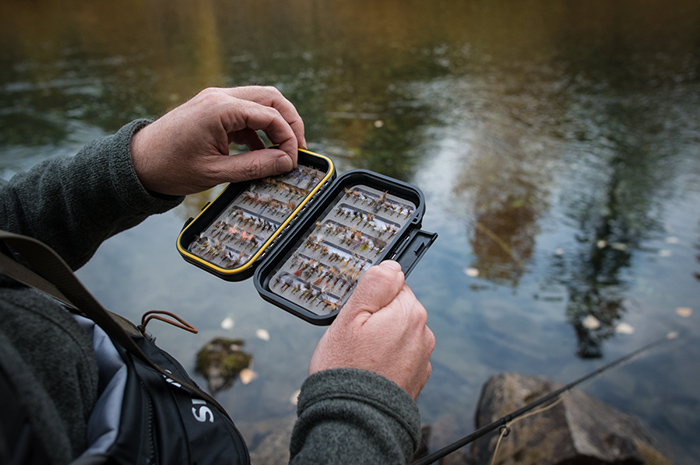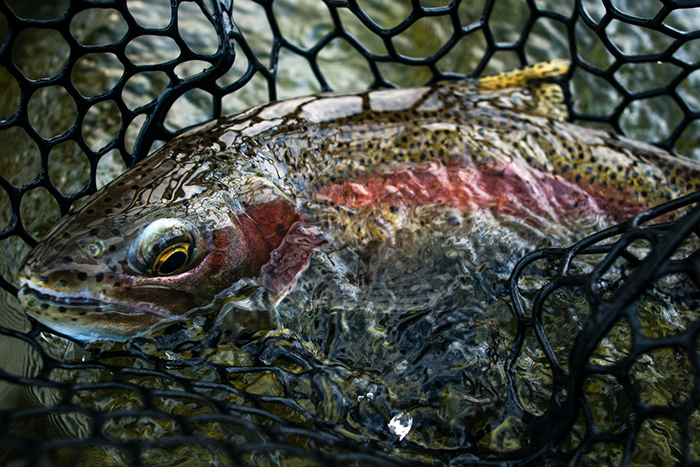Evaluate and Execute
Sean Visintainer - 11/14/18

Be well informed
Late fall fishing often can be good dry fly fishing. Late fall fishing though can also mean smaller bugs and educated fish. The fish have seen flies all season long, real ones and the phonies. Water levels are low and clear. Hatches are short lived. Time is of the essence.
It's easy to just tromp down to the river, jam out some casts and start hammering the water. But what if, instead you held back for a few minutes, or perhaps even longer like ten mins? What would that do to your success rate? I know what it does to mine. It goes up exponentially.
Fishing technical late season conditions is all about strategy. You have to have a game plan in order to be a winner. Dumb luck doesn't happen all that often and as we say at the fly shop... "The 'be-back' bus doesn't come by that often". That not only applies to sales, but to fishing opportunities like feeding trout. Fish of the fall generally give you one shot. Fuck it up and you're benched for the game.
The Spokane River is my training ground for technical fishing. Late season offers quality fish on bwo's and midges, but these fish are not found in the swift currents of spring or summer. Instead they love the soft inside currents, and sometimes no current whatsoever. Bringing your A-game is an understatement most times. I was working a few steady risers recently only to have my ass handed to me. Down and across drifts over multiple speeds of currents and fish that were feeding with consistency, but their timing was spaced out between rises such that it was hard to know precisely when the picky bastards were gunna surface again. I put them down and had to move on. Lesson learned again, needed to study them longer before making a shot.
3 absolute rules to live by when head hunting for wary trout:
- Stop, look, and listen Well I don't know about the listen part necessarily, but you get the idea. Slow down and watch. For how long? Depends. Depends on your patience level and/or commitment to hooking one of the fish you are targeting. Sometimes 1 min is fine, sometimes it's more like 5-10mins. You will know when it's time.
Watch how often the fish rises. Watch if he is rising and staying in the same zone or moving around and feeding. Is he feeding on adults or just below the film on emergers? Is the fish eating mayflies, caddis, midges, or something else drifting in the currents? Is it the closest fish to you or will you spook others to reach him? There are many things to consider to help you formulate a plan.
- Plan Plan your approach and attack. Take into consideration ALL of the things you learned from your 1-10 min study of the rising fish. I typically don't enter the river until I'm 100% confident I can and know where I'm going to cast. If I don't have to get in the river, I won't. Approach with a plan. A plan you derived from your moments of observation.
- One shot, one kill The term "sniper" can be used here. How many shots do you think an elite sniper for the U.S. Marines takes when he has identified his target? One. Because, that is all that is needed when you have done the other two. Fish doesn't eat on that drift? Sneak the fly out (CAREFULLY), stop, evaluate, and execute again.
Whether you are headhunting trout on the Spokane, NF Coeur d'Alene, or a Montana stream like the Missouri River, slow down, evaluate the situation, then execute a shot. A simple exercise in patience can be all that it takes for calculated success.
 Spokane Redband caught on a BWO - November 11, 2018
Spokane Redband caught on a BWO - November 11, 2018
